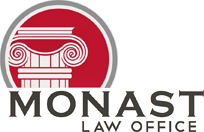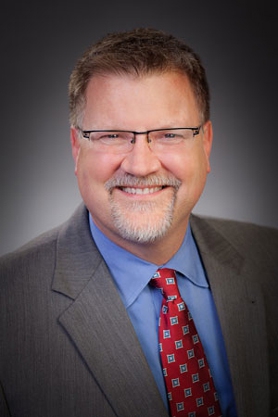On a routine delivery to a construction site, loose gravel caused you to fall and injure your knee. It was a lunch break delivery, and the worksite was deserted. Now, your employer is trying to dispute your claim because there weren’t any coworkers around to confirm what happened.
While witness statements are always helpful to an injury claim, there’s no need to worry if you don’t have them. After nearly 40 years assisting people with all kinds of issues, Ohio work injury lawyer Jim Monast of Monast Law Office relies on other forms of evidence to prove that the incident occurred in the course of your job. Our approach to a no-witness injury claim is to help you be detailed and diligent so the Ohio Bureau of Workers’ Compensation (BWC)—and your employer—acknowledges your need for medical attention and benefits.
Why Isn’t Witness Testimony Always Necessary?
No-witness injury claims are like that old saying, "If a tree falls in the forest and no one is around to hear it, does it make a sound?" However, you don’t need a coworker standing by your side to confirm that it happened. The law acknowledges that many jobs are performed solo, and workplace accidents in those settings are just as valid as those that occur in front of a group. What really counts is being able to link your job duties to the injury you sustained clearly.
Reporting the injury promptly, seeking medical treatment, and maintaining thorough documentation provide valid proof that’s difficult for the BWC or your employer to deny. By acting quickly and carefully recording what happened, we’ll help you build a strong case.
What Essential Evidence Supports Your No-Witness Injury Claim?
Ohio's legal system provides multiple pathways to establish the legitimacy of your workplace injury, even when you were working alone. The following types of documentation and proof can effectively supplement missing eyewitness accounts and significantly strengthen your claim.
Immediate Medical Documentation
Health care records are the foundation of your workers' compensation evidence. When you explain to a medical provider exactly how the incident happened, they’ll document your account in their records, creating an official timeline.
Your doctor also notes whether your injury or illness matches your description of the incident. So when our client Jason, a package delivery driver, was diagnosed with lateral and medial meniscus tears in his knee after stepping out of his truck, medical findings indicated that his injury arose out of and was sustained during the course of his employment. These records carry considerable weight because health care professionals have no reason to fabricate your story.
Early Incident Reporting
Please report your injury or illness to your supervisor as soon as possible. The BWC requires workers to notify their employer within 30 days of the injury, but earlier reporting strengthens your claim, as it demonstrates your injury is genuine.
Ask your supervisor for a First Report of Injury (FROI) form to file with the BWC. This official record documents what happened and becomes crucial evidence in your case. Even if your supervisor seems skeptical, you should make sure to file the report to create a paper trail.
Physical Evidence at the Scene
Items like a broken tool, spilled materials, or an overloaded cart don’t just illustrate how your injury happened—they help create a clear, objective record that supports your claim. Photographs of the scene preserve details that might otherwise be lost or disputed later.
Beyond the immediate surroundings, maintenance and safety records are equally powerful. If machinery malfunctions, for example, logs may show a history of issues or neglected repairs, strengthening the connection between the equipment’s condition and your injury. This type of workers’ compensation evidence not only reinforces your credibility but also helps establish accountability.
Surveillance Footage and Electronic Records
Another way to prove your injury happened at work is through technology. For example, a security camera might have video of your slip on loose gravel at the jobsite. Request this footage as soon as possible, as many systems automatically delete recordings after a few weeks. Even if cameras didn't directly show your accident, they could prove you were in the area when you claim the injury occurred.
Electronic records can also support your claim. Badge swipe data shows when you entered different work areas. Computer logs prove when you operated specific machinery. Time clock records demonstrate you were working when the injury happened.
Expert Medical Testimony
Sometimes, medical professionals can testify about whether your injury could have occurred the way you described. An orthopedic surgeon might explain how the lifting techniques you described would cause the specific back injury you sustained. This expert testimony helps establish the plausibility of your account.
Another valuable expert is an occupational medicine specialist. Their testimony carries weight because they understand workplace injuries and can explain how job duties typically lead to specific types of harm.
How Our Ohio Work Injury Lawyer Builds Your Case Strategy
You don’t have to go through the process of filing a no-witness injury claim on your own. Having Monast Law Office in your corner from the start gives you peace of mind, allowing you to focus on healing while we ensure that paperwork, evidence collection, and deadlines are correctly handled.
Remember, your case doesn’t depend on having witnesses—it relies on building strong evidence of your incident. With careful documentation, medical records, and our professional guidance, you’ll have the foundation you need to move forward with confidence.


